Overwhelmed and Underfunded: LA’s Shelter Reality
Exposing the crisis in LA animal shelters—from the root causes to the cycle that keeps it going, the people making a difference, and how you can help support real change
By Siena Maniatis
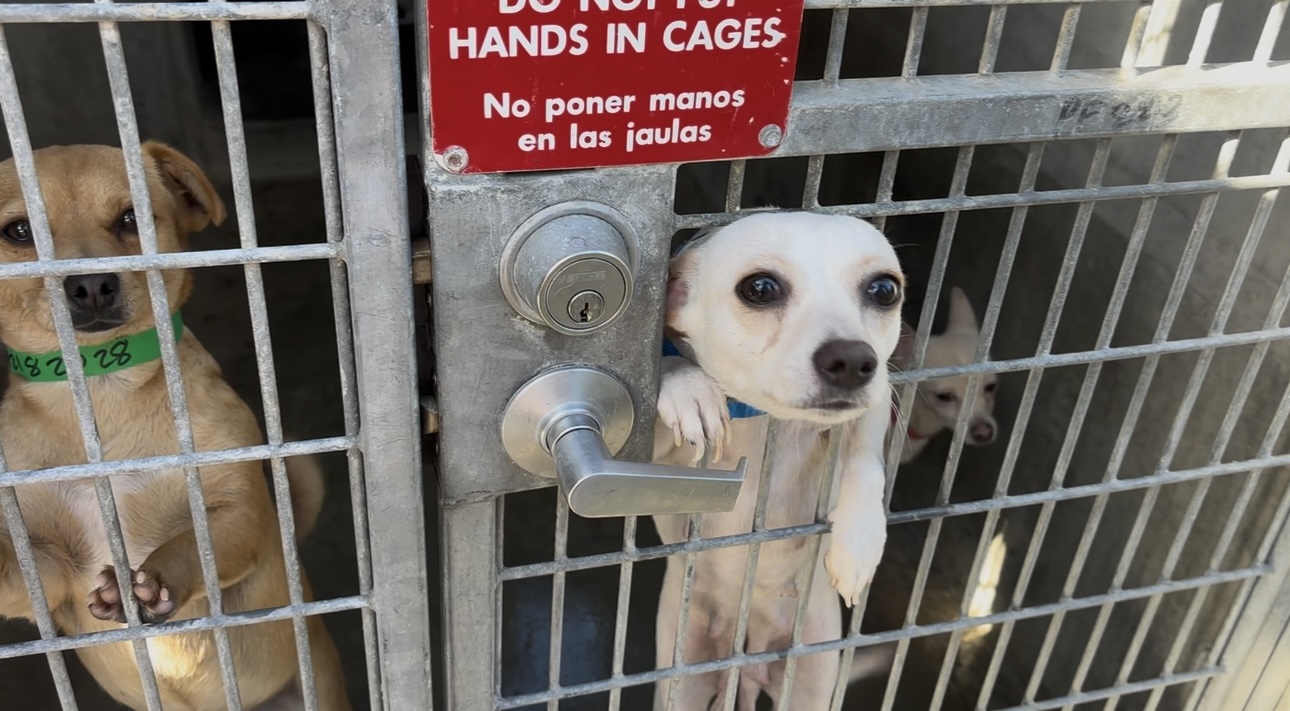

Los Angeles Animal Services (LAAS) is facing a growing crisis, plagued by severe overcrowding, understaffing, and a dramatic rise in euthanasia rates.
Amid this ongoing crisis, the city of Los Angeles is also grappling with a $1 billion budget deficit. In her State of the City address on April 21, Mayor Karen Bass outlined a budget proposal for the 2025-26 fiscal year that includes hundreds of layoffs and substantial cuts to various departments. Initially, animal welfare advocates raised concerns that LAAS would lose so much funding that three of the city’s six shelters would be forced to close.
However, city officials later clarified that this was a misunderstanding. While the budget reduces $4.8 million in direct funding to LAAS, it also sets aside $5 million in a reserve fund to ensure shelter operations continue if needed. The confusion stemmed from a lack of clarity in budget documents, which initially failed to include the $5 million reserve, leading to fears of shelter closures and increased euthanasia.
Despite this clarification, there is ongoing frustration and concern regarding the city’s role in the current state of LAAS. Many feel that the city’s response lacks urgency and fails to address the root causes of the crisis.
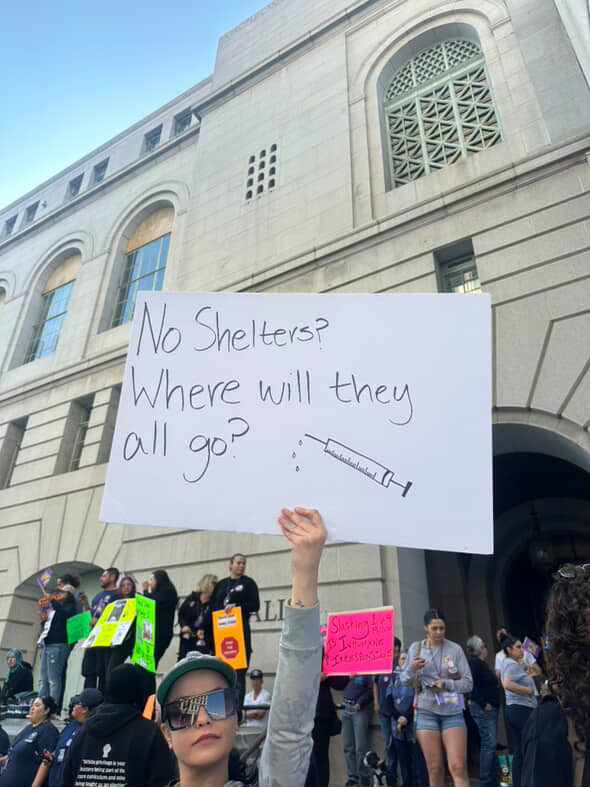
City Controller Kenneth Mejia, who took office in December 2022, has been transparent about his concerns since the beginning of his tenure, positioning himself as a voice for change.
In November of last year, the Los Angeles Times published an investigative report exposing the city’s failure to uphold its commitment to saving animals. According to the report, LAAS– which is made up of six shelters across the city of Los Angeles– saw a staggering 72% increase in dog euthanasia and a 17% increase in cat euthanasia across shelters from January through September 2024 compared to the same period in 2023.
Mejia told The Times that “everyone at City Hall” is aware of the chronic understaffing and overcrowding issues plaguing the shelters, yet Mayor Karen Bass and the majority of the City Council have continued to back budget cuts to the department, deferring positive change.
“The city needs to do more to protect the animals, department staff, and the public—not just let the animals suffer deteriorating health in our shelters and end up getting euthanized,” he said.
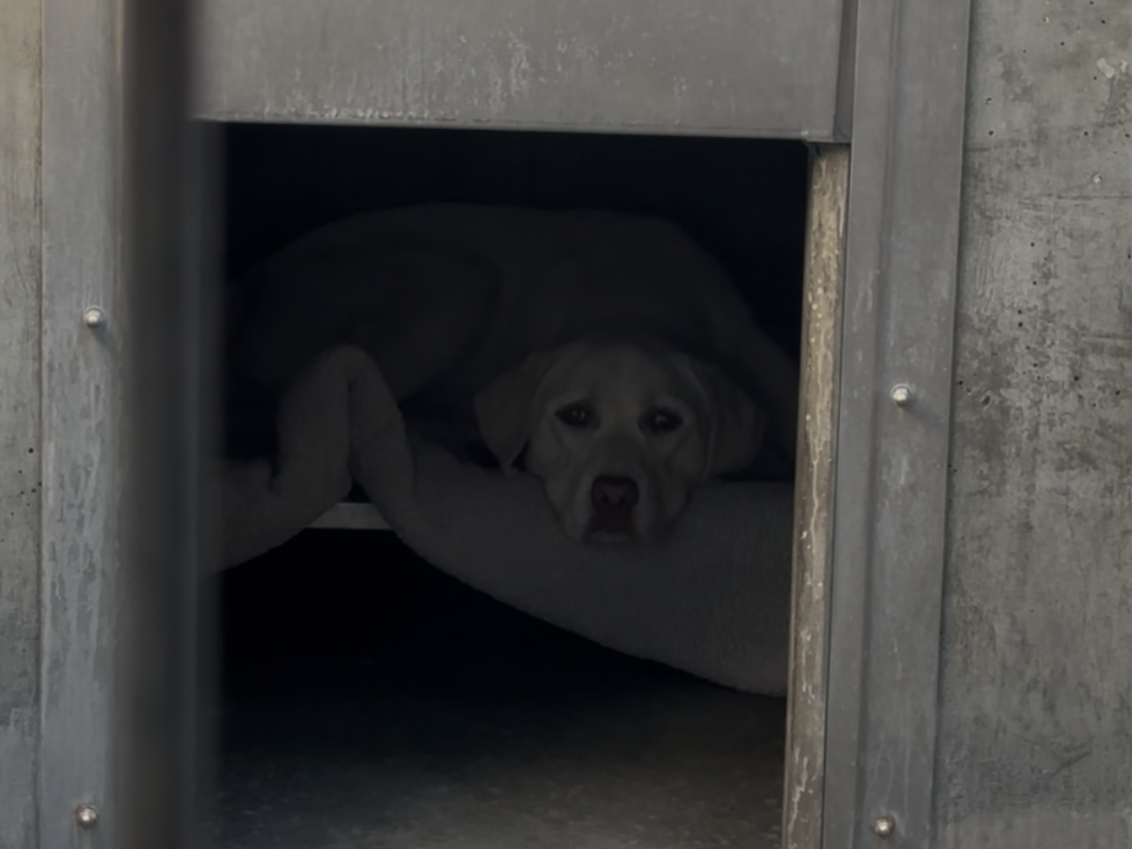
While LAAS maintains that animals are only euthanized for medical or behavioral reasons, not due to space constraints, former staff, volunteers, and animal welfare advocates suggest otherwise. They report that overcrowding has become so extreme that even healthy, adoptable animals are being placed on euthanasia lists for minor issues, such as treatable illnesses or signs of stress and anxiety.
As of April 2025, the LAAS Woof Stat report, which outlines the department’s official statistics on a monthly basis, has posted data for January and February 2025. Euthanasia rates for cats and kittens have slightly decreased compared to the same period in 2024, however, dog euthanasia has increased 16%. If this trend continues, dog euthanasia will likely rise significantly over the remainder of the year. Additionally, spring and summer, peak kitten birth seasons, are expected to drive a further increase in cat and kitten euthanasia rates.

Last year, hundreds of thousands of animals were euthanized in LAAS shelters, and given the rise in euthanasia for dogs as well as the projected uptick in cat and kitten euthanasia, overall numbers for 2025 are expected to climb even higher than 2024. According to the Los Angeles Times report, within just the first eight months of 2024, an estimated 1,224 dogs and 1,517 cats were euthanized, underscoring the sheer severity of the crisis.
The surge in euthanasia rates is driven by a combination of deeply rooted issues that fuel an ongoing systemic cycle. Declining adoption numbers, unregulated breeding, widespread mismanagement within LAAS, and limited access to affordable spay and neuter services all contribute to the crisis. As city officials scramble for solutions, shelters remain overwhelmed. With hundreds of animals entering the system daily and too few leaving through adoption, the cycle continues—and the fate of thousands of animals remains uncertain.
Following growing concern and public outcry, the City Controller’s office launched an investigation into LAAS at the end of last year. The report, which is estimated to be published later this year, will hopefully target the issues within the department and propose feasible solutions; however, in the meantime, conditions within shelters remain less than ideal.
Reports from whistleblowers and former staff members paint a poor picture of LAAS shelters, ranging from mild to severe depending on the location. Allegations include unclean kennels, inadequate care, and instances where animals are left without food or water due to staffing shortages.


A visit to one of Los Angeles’s six city-run shelters offers a stark glimpse into the conditions many animals endure daily. Small dogs are often crammed into kennels built for one, with as many as four sharing the same confined space. Larger dogs show clear signs of stress, pacing anxiously within their enclosures as the deafening sound of nonstop barking fills the air. With too few staff members to care for the overwhelming number of animals, kennels frequently go uncleaned, forcing some dogs to eat near their own waste.
In addition to the ongoing formal investigation launched by the City Controller’s office, Mejia posted an in-depth breakdown of LAAS conditions titled “LAAS Transparency Charts to his website in October of last year. This interactive dashboard provides users with frequently updated information regarding LAAS conditions, with charts that track capacity levels per shelter, how often dogs are being walked, intake and adoption rates, and more. This transparency aims to highlight the ongoing challenges the shelters face, helping the public better understand the severity of the situation.
One of the most troubling issues revealed in the transparency reports is the lack of exercise for a significant portion of dogs under LAAS care. The data shows that many dogs across shelters have gone extended periods without being walked, spending the majority of their time confined to small cement cages with minimal stimulation. This lack of exercise directly contributes to heightened stress and behavioral problems like anxiety and aggression, making these dogs more likely to end up on the euthanasia list. On average, dogs in LAAS shelters are walked only once every 8-14 days—far below what is necessary to maintain a healthy, well-adjusted animal.

The combination of overcrowding, inadequate staffing, and a lack of exercise is not only harming the physical and mental health of the animals, but it is also raising concerns about the accuracy and fairness of behavioral assessments used to determine which dogs are placed on the euthanasia list. These concerns have intensified following a recent policy change, which was implemented after a dog at the San Pedro shelter mauled a long-time LAAS employee, per NBC Los Angeles.
Under the new policy, dogs deemed “dangerous” now have only 72 hours to be rescued by an authorized group before being euthanized, a significant reduction from the previous three-week timeline. Additionally, staff members now have the authority to determine when a dog is eligible for euthanasia due to aggression—a decision that was previously reserved for shelter managers.
This recent policy change paired with the increase in euthanasia rates over the past year has sparked a range of responses, revealing a deep divide in perspectives on how to manage the shelter system’s ongoing crisis. Leslie Corea—the victim of the San Pedro dog attack—believes euthanasia, while difficult, has become increasingly more necessary under current conditions.
“There are so many people that have been bitten and mauled at the shelters, and it needs to stop because we’re overcrowding and we’re not euthanizing the animals that need to be euthanized in a timely manner,” Corea said.
She argues that overcrowding has reached a critical point, making it nearly impossible for shelter staff to care for every animal humanely. From this view, timely euthanasia of animals who exhibit signs of aggression or have illnesses is seen as a tragic but essential step to ensure safety and preserve resources for more adoptable animals.
Others like animal welfare advocate, Nathan Winograd, offer a starkly different perspective on the challenges facing LAAS.

A leading figure in the No Kill movement, Winograd argues that the root problem is not just overpopulation but rather flawed shelter policies and leadership. He challenges the long-held belief that overcrowding is inevitable in large urban areas, pointing out that the most successful shelters nationwide have achieved placement rates as high as 99%, even in communities with high per capita intake.
“If a shelter runs effectively, efficiently, and humanely, it can place over 95% of the animals without turning them away, overcrowding, and declining standards,” Winograd states.
According to Winograd, the primary issue lies in shelter leadership and accountability. He argues that too often, shelter staff reason backward—assuming that because animals are being killed, there must be an overpopulation crisis. Winograd believes that the difference between success and failure in a given community shelter cannot be solely blamed on the public’s failure to sterilize animals but the decisions made by those who run it.
One of Winograd’s most pointed criticisms is the cycle created when shelters treat animals inhumanely and then use the resulting behavioral or health issues as justification for euthanasia. He notes that animals often develop anxiety, aggression, or other behavioral challenges specifically because of the stressful and neglectful conditions within the shelters.
For example, as detailed in Mejias Transparency Reports there is a lack of exercise, minimal human interaction, and inadequate care given to each dog across LAAS shelters, Winograd argues that this can and will cause a once-friendly dog to become fearful or reactive. But instead of addressing these root causes, shelters often label such animals as “unadoptable” and proceed with euthanasia.
“How can shelters blame animals for behaviors that are directly caused by the way they are treated while confined?”
Nathan Winograd
He also challenges the practice of euthanizing animals with treatable medical conditions, arguing that poor shelter management and inadequate care often lead to health deterioration.
“Animals who arrive healthy can develop illnesses due to unsanitary conditions or stress, and then be euthanized for those very conditions,” he explains. This creates a tragic cycle where the shelter environment itself becomes the primary cause of the problem it claims to address.
Winograd also rejects the idea that residents in low-income areas are inherently less responsible pet owners, citing that when cost barriers are removed, “90% of residents in the most impoverished neighborhoods sterilize their animals and provide medical care rather than surrendering them to the shelter.” He emphasizes that instead of blaming the public, shelters should focus on making sterilization and other essential services more accessible.
In his view, achieving No Kill outcomes in large cities like Los Angeles is not only possible but proven in other communities. “Communities implementing the No Kill Equation nationwide have achieved placement rates as high as 99%, including those with very high per capita intake, even before a low-cost sterilization program was implemented,” he says. Winograd asserts that with proper leadership, resource allocation, and community involvement, even high-intake shelters can achieve No Kill outcomes without resorting to widespread euthanasia.
Winograd ultimately calls for a fundamental shift in leadership attitudes and practices within LAAS, emphasizing that with the right strategies, Los Angeles has the potential to become a No Kill city. “The reason animals are dying in shelters is not a lack of homes. It is that municipal pounds are not implementing the programs and services that make No Kill possible,” he concludes.
These complex issues underscore the deep conflicts inherent in managing a shelter system under strain—where staff safety, animal welfare, and public expectations often collide. Balancing these priorities becomes increasingly challenging as shelters face mounting pressures from overcrowding, limited resources, and public scrutiny. The conflicting perspectives on euthanasia—whether seen as a necessary response to safety risks or a failure of shelter practices—highlight the difficulty of making humane, ethical decisions in an overburdened system.
At the heart of the problem lies a deeper, systemic cycle that perpetuates the crisis: overcrowding leads to heightened stress and behavioral issues, which in turn justify increased euthanasia rates. Meanwhile, chronic understaffing results in inadequate care, worsening conditions for the animals and contributing to public outrage.
These interconnected problems are not isolated incidents but rather symptoms of a failing system where outdated policies, insufficient funding, and leadership challenges create a persistent loop of suffering and inefficiency. Addressing this cycle requires not just short-term fixes but a comprehensive approach that examines shelter practices, resource allocation, and community engagement.
To understand the root causes more clearly, it is essential to examine how these systemic failures compound one another, ultimately trapping shelters in a cycle that perpetuates both animal suffering and public dissatisfaction.
Each of these factors interconnect, feeding into a cycle that undermines efforts to create sustainable, humane animal welfare systems and perpetuates the challenges of overcrowding, euthanasia, and inadequate care.
Edward Boks, a veteran animal welfare advocate and former General Manager of LA Animal Services, offers a valuable insider perspective on how the department once made measurable progress—and why he believes it’s now in decline.
Boks, who has overseen three of the largest animal control systems in the U.S.—Maricopa County, New York City, and Los Angeles—was brought to LA in the early 2000s after successfully reducing euthanasia rates in Arizona and New York.
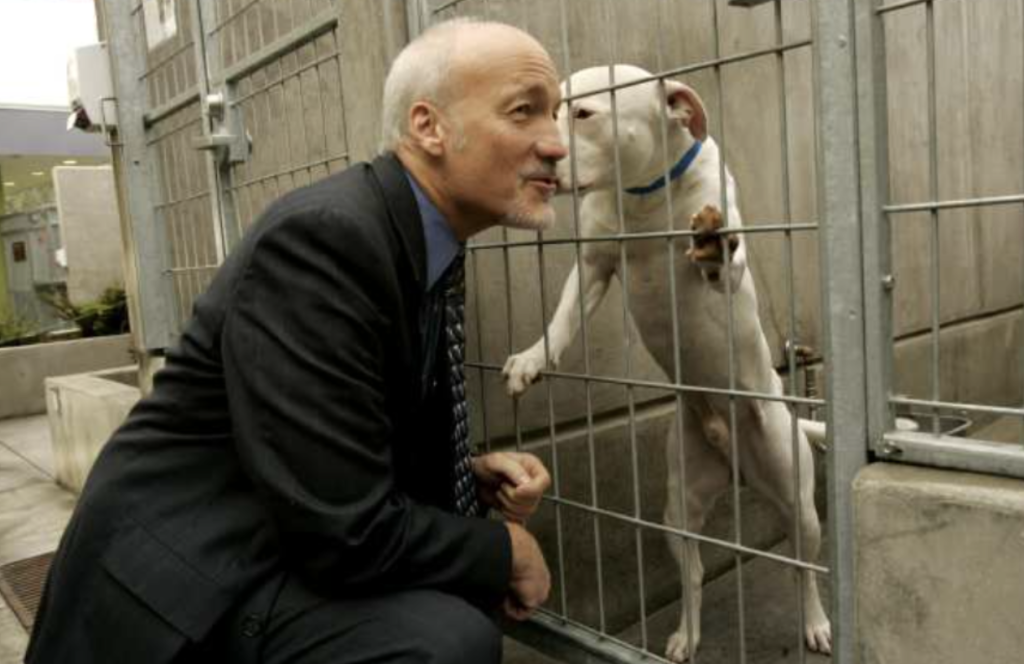
“When I arrived, LA was euthanizing about 17,000 animals a year,” he said. “By the time I left, we’d gotten that number down to around 6,000.” He credited the shift to community engagement, targeted no-kill policies, and strong leadership. “We were very, very successful… We demonstrated that it can be done, but it’s not going to be done by itself.”
But Boks says the progress unfortunately didn’t last, “As soon as I left, it went up 24%,” he recalled, attributing the backslide in part to entrenched leadership resistant to change. Despite LAAS’s sizable budget, he said resources were eaten up by internal staffing costs, leaving little room for critical improvements in care and operations. “The biggest challenge was my direct reports—tenured, union-protected staff more interested in protecting their jobs than doing them.”
During his time at LAAS, Boks emphasized his focus on public education and donor engagement as key tools for closing the gap between what the city funded and what the shelters needed. “We encouraged the community to adopt, to volunteer, and to donate,” he said. “And while I was there, I was able to raise substantial sums of money to help augment what we needed to achieve no-kill.”
Now resigned from city leadership but still active in advocacy, Boks is a vocal critic of how the no-kill movement has evolved, especially policies he believes prioritize optics over true reform. “I come at it from the original intent to end euthanasia as a means of population control,” he said. “But the movement has become quite jaded. It’s being used for funding more than really helping animals.”
He is particularly concerned with the influence of organizations like Best Friends Animal Society, which he says promotes a version of no-kill ethic that encourages shelters to refuse intake in order to maintain a 90% live release rate.
“If the shelter is full, they tell the public to take the animal back where they found it,” Boks said. “They’ll make exceptions for adoptable puppies or kittens, but not for sick, injured, or behaviorally challenged animals.”
He believes such policies have contributed to a steep decline in both animal welfare and public safety across shelters nationwide.
“The whole goal of achieving a 90% live release rate at all costs is really counterintuitive to where we are as a community right now. These policies have turned back progress probably 20 or 30 years.”
Edward Boks
Boks’ criticism of the current no-kill framework is not isolated. National advocacy groups have voiced similar warnings about how such policies are playing out in Los Angeles.
In response to a request for comment, a PETA representative wrote in an email that “Los Angeles’ taxpayer-funded public shelters are turning animals away to maintain so-called ‘no-kill’ status and warehousing animals for months or even years.”
The conditions they describe—animals confined for prolonged periods with minimal contact—mirror Boks’ concerns about shelters prioritizing live-release statistics over humane care. Both Boks and PETA argue that truly ethical sheltering must include open admission, robust spay/neuter programs, and policies that prioritize the well-being of all animals, not just the most adoptable ones.
Together, these critiques point to broader tensions in the city’s approach to animal welfare. Central to Boks’ argument is the idea that meaningful, sustainable progress depends on experienced leadership capable of addressing these challenges. He claims that without knowledgeable, courageous leadership at their core, shelters like LAAS will continue to struggle—and animals will pay the price.
Since stepping down as General Manager of LA Animal Services in 2009, Ed Boks has remained active in the animal welfare field as a consultant and commentator. He now runs Ed Boks Consulting, advising government agencies and nonprofits on shelter operations, legislative strategy, and program development. He also writes Animal Politics, a Substack blog focused on shelter policy, public safety, and animal welfare reform.
Boks’ resignation followed mounting criticism over his decision to suspend Los Angeles’ free spay/neuter voucher program for low-income pet owners—an action he said was driven by budget shortfalls. According to a 2009 Los Angeles Times article, he stepped down just a month after announcing the cut.
In his prepared statement at the time, Boks called for unity among the city’s animal advocates. “Whether you love me or hate me is irrelevant,” he said. “I simply ask that you now turn your focus to the animals who need your help most. Pet overpopulation is a community problem, and L.A. needs to pull together to resolve it.”
Since Ed Boks’ departure in 2009, LA Animal Services has experienced both long-term and short-lived leadership, reflecting the challenges of managing the department. Brenda Barnette held the position for over a decade before retiring in 2021, but her successors have faced a more turbulent path.
Most recently, in November 2024, Staycee Dains resigned after just 17 months in the role, following a period of rising euthanasia rates and severe overcrowding. Dains had been on paid leave since August, and city officials have not publicly disclosed the reasons behind her absence or resignation.
In the wake of her departure, longtime LAAS employee Annette Ramirez was reappointed as interim General Manager—a role she had previously held following Barnette’s retirement. As of now, the city has not announced a timeline or formal process for selecting a permanent replacement.
Code Red K9 Crew, based in Redlands, California, specializes in rescuing bully breeds and pitbull mixes. Their mission goes beyond rescue—they strive to rehabilitate dogs in need, provide essential medical care, and ensure that every animal they save finds a safe, loving home. Committed to responsible pet ownership, Code Red K9 Crew spays and neuters all dogs before adoption and educates families on proper care.
The organization takes a thorough approach to placing dogs by conducting home inspections and carefully screening potential adopters. By prioritizing rehabilitation, medical care, and education, Code Red K9 Crew not only saves lives but also promotes long-term, responsible pet ownership.
View adoptable dogs here
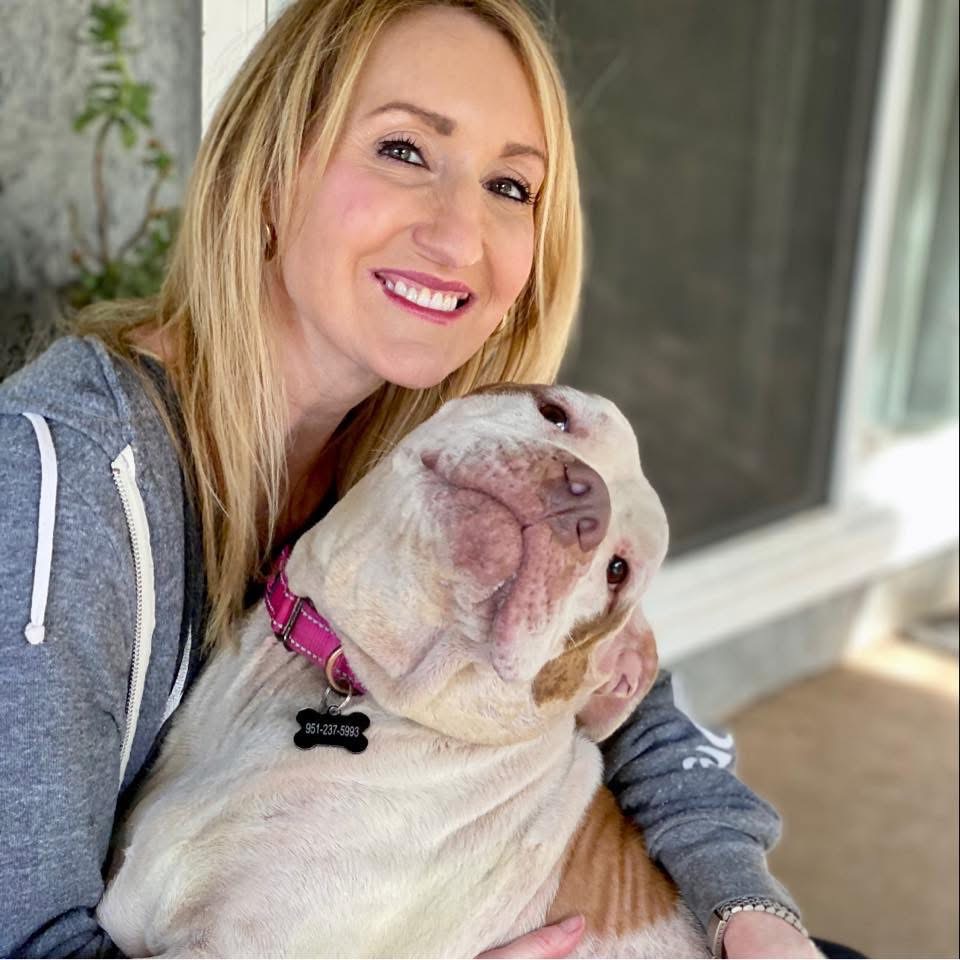



The Labelle Foundation, founded in 2018 by mother-daughter duo Sabrina and Laura Labelle, focuses on rescuing the most vulnerable animals—primarily medical cases and mothers with babies.
Over the past six years, the foster-based rescue has completed over 6,000 adoptions and primarily works with high-risk shelters outside Los Angeles County, especially in Bakersfield and Kern County.
“If you go just two hours outside of LA to Bakersfield, Coachella Valley, Riverside, it’s literally like Death Row non-stop,” shared Samantha Peraino, the head of operations.
Committed to responsible pet ownership, Labelle ensures that every adopted animal is spayed or neutered and funds multiple spay and neuter clinics annually. They also encourage community involvement through fostering, fundraising, and spreading awareness. By addressing root causes like overpopulation, the foundation continues to make a lasting impact on animal welfare in Southern California.
View adoptable pets here

Choosing to adopt rather than shop for your next pet makes a meaningful difference. Shelters across the country are home to thousands of beautiful, healthy animals waiting for loving homes. By adopting, you’re giving a deserving animal a second chance while helping to reduce overcrowding and unnecessary euthanasia.
View adoptable LAAS animals here

If you’re not in a position to adopt your furever friend yet, you can make a difference by fostering an animal in need. By offering a temporary home, you’re helping reduce overcrowding and giving an animal a safe, loving environment until they find a more permanent solution. Fostering not only saves lives but also provides invaluable socialization and care for animals in need.
Apply to foster LAAS animals here

Donating is a powerful way to support shelters and rescue organizations, even if you can’t adopt or foster. While monetary contributions are always appreciated, there are many other ways to help. Consider donating supplies like pet food, bedding, cleaning products, and toys—items that shelters constantly need. Your generosity can make a huge difference in the lives of animals and the people who care for them.
Donate to LAAS here

Advocating for animals can also mean using your voice to protect their well-being. One crucial way to do this right now is by signing petitions that support shelter funding and humane treatment.
Los Angeles shelters are facing potential budget cuts that would severely impact animal care and resources.
By signing this petition, sponsored by the Stray Cat Alliance, you can help ensure that LA shelters receive the funding they need to continue their vital work. Your signature matters—stand up for the animals that rely on these shelters for safety and care.

Volunteering your time is one of the most hands-on ways to support animals in need. Whether you’re walking dogs, cleaning kennels, helping with adoptions, or simply providing companionship, your efforts make a direct and positive impact. Shelters and rescues often rely on volunteers to fill crucial roles, from daily care to community outreach. In fact, at Los Angeles Animal Services, volunteers are essential—just in April 2022, 635 volunteers contributed over 6,345 hours of service, as according to their website. By giving just a few hours of your time, you’re not only enriching the lives of the animals but also helping shelters operate more effectively despite staffing shortages. Your commitment truly makes a difference.
Apply to volunteer at LAAS here

Spreading the word is another powerful way to make a difference. Sharing information about adoptable pets, volunteer opportunities, or the importance of adopting rather than shopping through social media and word of mouth can inspire others to take action. Whether it’s posting about local shelters, sharing success stories, or encouraging friends and family to get involved, your voice helps raise awareness and build a supportive community for animals in need. Every share counts—your efforts to spread the love can lead to more adoptions, donations, and volunteers.
Follow the Labelle Foundation here
Follow Code Red K9 Crew here
Follow LAAS here